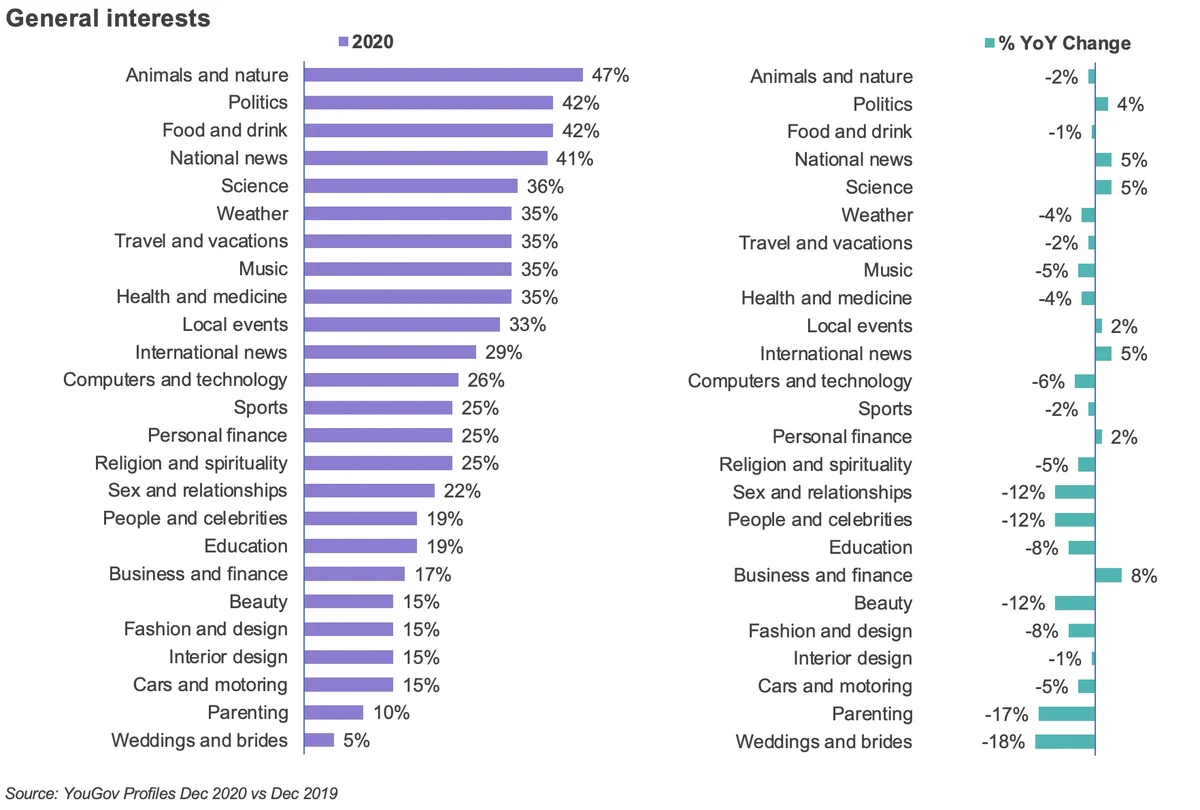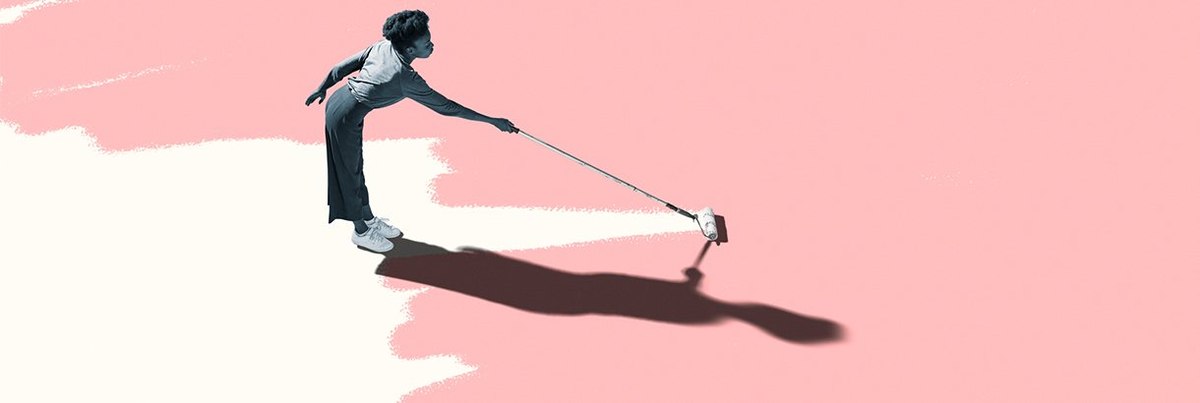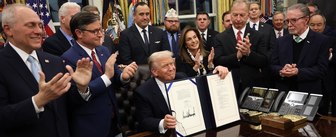We’re closing in on a full year of life upturned by COVID-19, with the first cases identified in January 2019 in the US. There have been a myriad of changes to our behaviors this year – from how we shop, to how we eat, to what we watch. Some new behaviors, such as the flexibility to work from home and masking up on public transit during flu season, may stick with us. Other behaviors, like travel and dining out, may quickly return to life before COVID-19.
With that said, this week I thought I’d explore how our experiences of the past year have changed our personal interests. The picture emerging from the data is of a somewhat more serious, practical consumer than before the pandemic.
Which topics attracted and lost our interest in 2020?
Between the election and a global pandemic, it makes sense that Americans became slightly more interested in Politics, National News, Science, International News, and Business and Finance. And even though we couldn’t travel as much, our interest in Travel and Vacations basically held steady.
The topics of interest that see the biggest declines are those centered around the social and self-expression aspects of our lives. These topics include Sex & Relationships, People and Celebrities, Beauty, Parenting, and Weddings & Brides – all of which see decreases in the double-digits. In the absence of a robust in-person social life due to pandemic-related restrictions, self-expression becomes less important and the data reflects this change.
In terms of our hobbies during COVID-19, the only substantial increase is in more people playing games on devices. It’s a good time to make sure gaming platforms are on your media plan, as these audiences are increasing. In a recent report, YouGov analyzed state of the video gaming sector that’s thriving amidst global crisis and uncertainty.
While declines in hobbies such as playing sports and the performing arts were to be expected due to restrictions on in-person activities, YouGov data shows there were also fewer people spending their spare time on solo creative pursuits like photography, arts and crafts, writing, and knitting/sewing too.
Perhaps more home life doesn’t necessarily mean more free time, especially if working from home more means work life cutting into personal hours or if eating at home more means more time preparing and cleaning up meals. What we’re seeing may be the net effect of more time at home failing to yield us more time for our creative pursuits. We’ve also seen a notable drop in people who have a bucket list this year. Roughly 16 million Americans stopped having a bucket list with consistent drops across age and gender. It could be that life currently feels like it’s on pause and some of us are having trouble envisioning the future while in limbo. Or could the idea of a bucket list be starting to lose relevance? Marketers and publishers should keep a pulse on this to determine if and when to embrace messaging about a return to “checking things off your bucket list.”
We’ve also seen a notable drop in people who have a bucket list this year. Roughly 16 million Americans stopped having a bucket list with consistent drops across age and gender. It could be that life currently feels like it’s on pause and some of us are having trouble envisioning the future while in limbo. Or could the idea of a bucket list be starting to lose relevance? Marketers and publishers should keep a pulse on this to determine if and when to embrace messaging about a return to “checking things off your bucket list.” This doesn’t necessarily mean doom and gloom forever. Our human need for entertainment, laughter, and inspiration obviously hasn’t disappeared, and we need those things from brands even if we’re a little more serious right now. I suspect we’ll have pent up whimsy and creativity to express on the other side of COVID-19, but we’ll need to gauge how long it takes for us to relax and release it. Brands have an opportunity to be part of the return to joy (especially in experiential marketing and at brand events), but it will need to be timed carefully to avoid being tone-deaf.
This doesn’t necessarily mean doom and gloom forever. Our human need for entertainment, laughter, and inspiration obviously hasn’t disappeared, and we need those things from brands even if we’re a little more serious right now. I suspect we’ll have pent up whimsy and creativity to express on the other side of COVID-19, but we’ll need to gauge how long it takes for us to relax and release it. Brands have an opportunity to be part of the return to joy (especially in experiential marketing and at brand events), but it will need to be timed carefully to avoid being tone-deaf.
It’s a challenging time for marketers, but up-to-date data is available and can be critical during this period of change. YouGov’s ability to track consumer perceptions across time and specific audiences can help provide answers and insights.
Image: Getty









